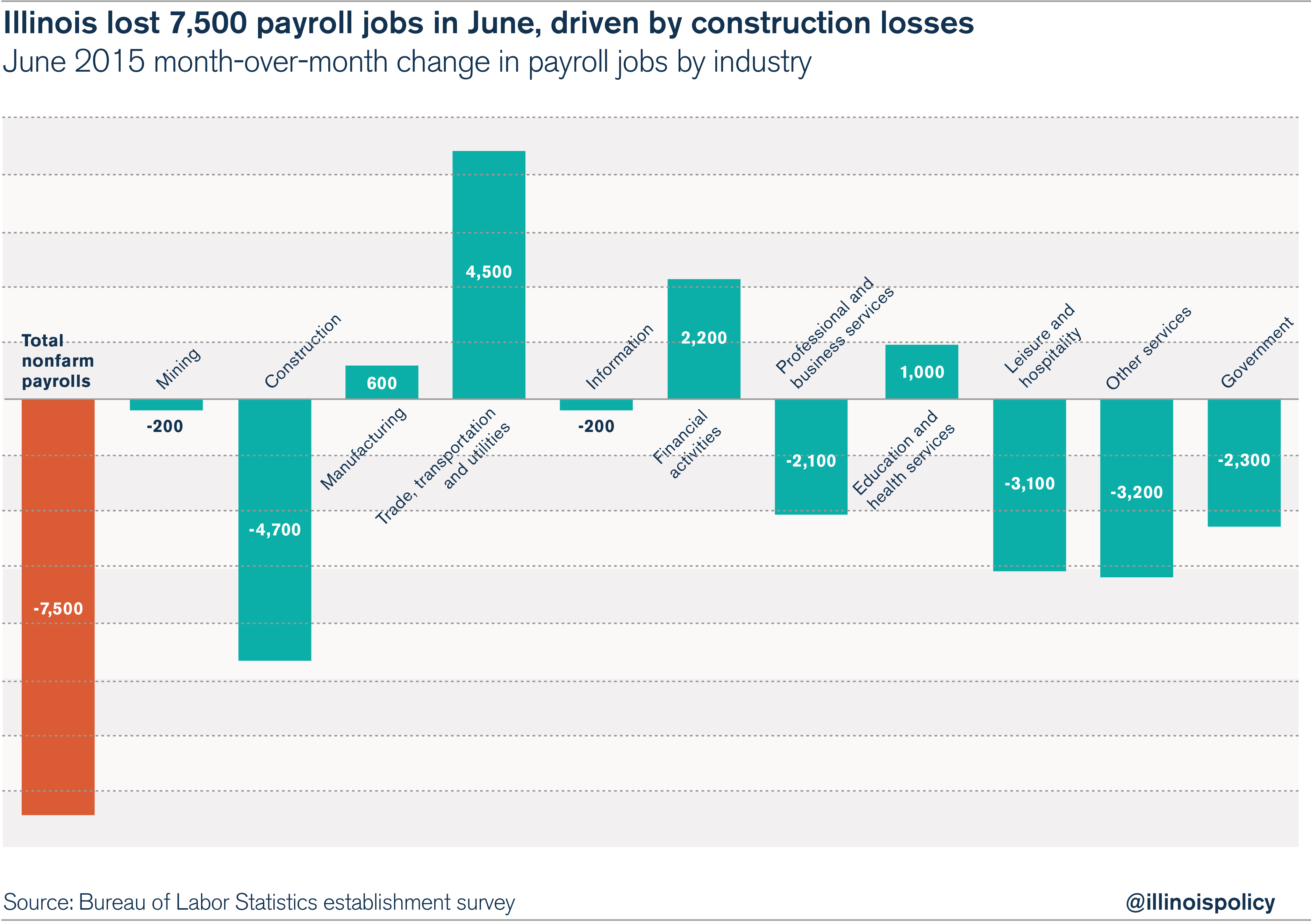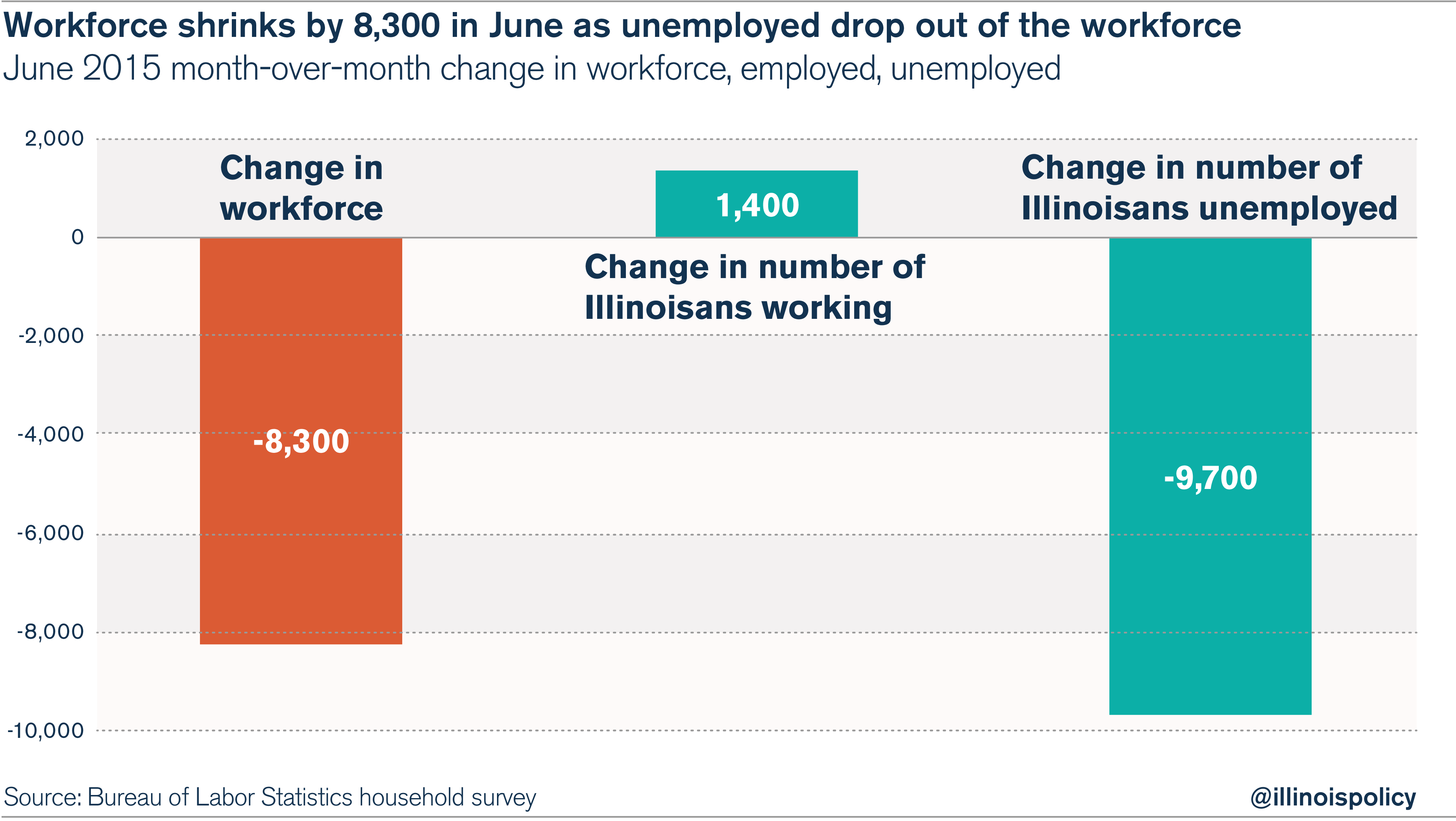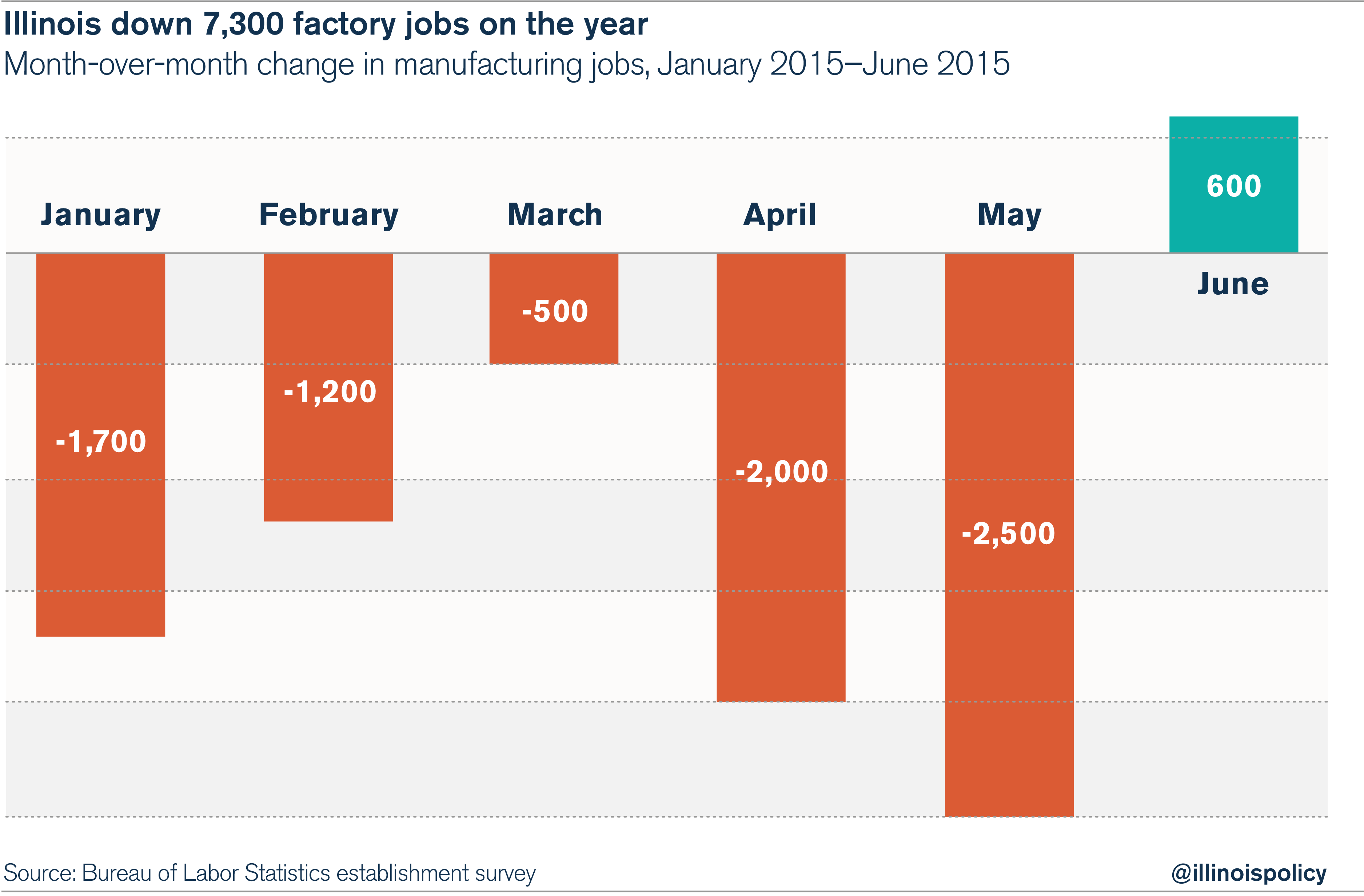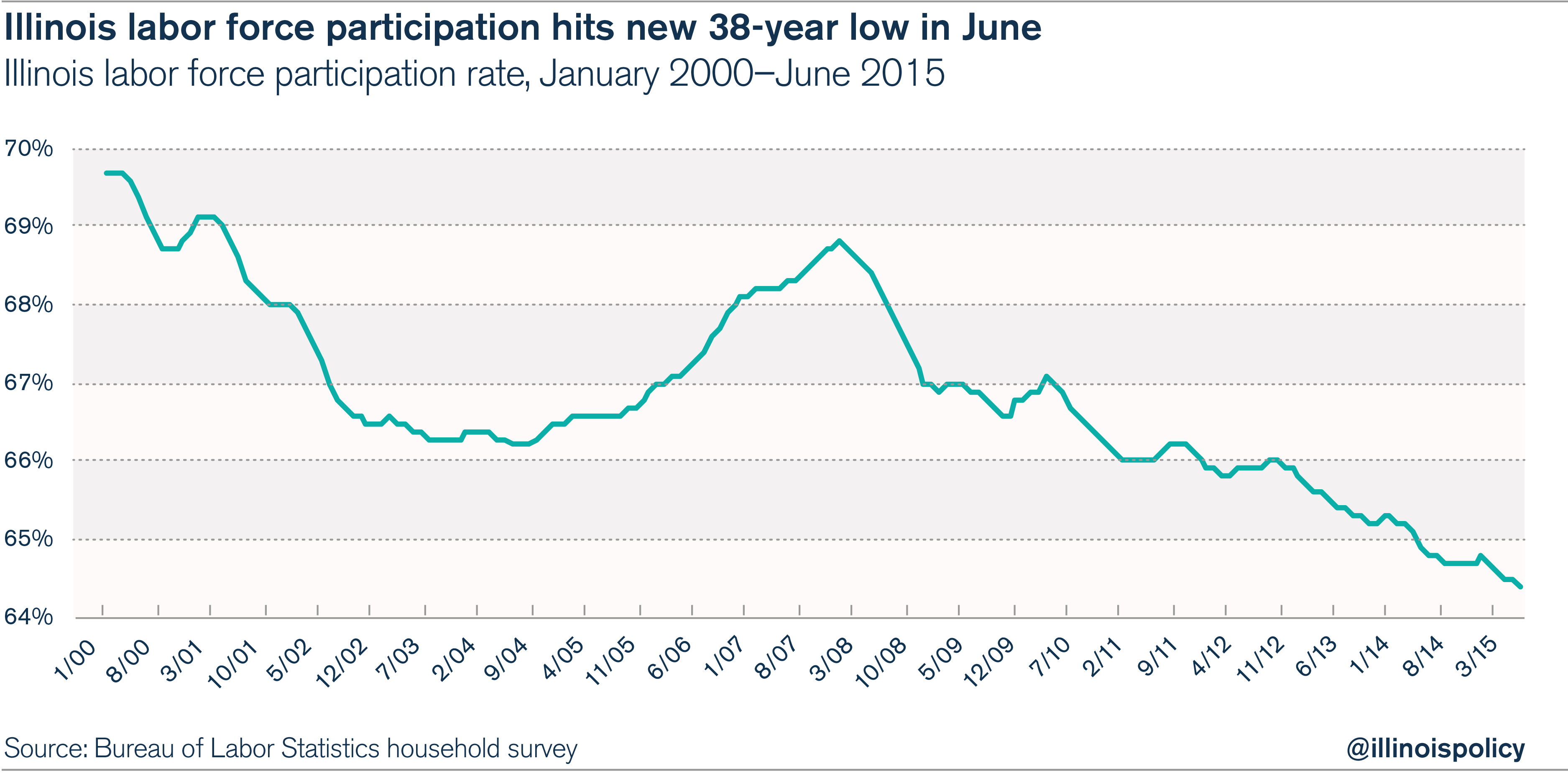June jobs report: Payroll jobs drop by 7,500, workforce shrinks by 8,300
Illinois is hemorrhaging jobs as Springfield refuses reform.
Illinois lost 7,500 payroll jobs in the month of June, according to the July 16 economic release from the Illinois Department of Employment Security. The state unemployment rate fell to 5.9 percent from 6 percent, almost entirely driven by unemployed workers leaving the workforce.
The drop in payrolls was led by the loss of 4,700 construction jobs, according to the business establishment survey. Several other sectors reported net layoffs, including leisure and hospitality (-3,100); other services (-3,200); government (-2,300); professional and business services (-2,100); mining (-200), and information (-200). Job gains occurred in trade, transportation and utilities (+4500); financial activities (+2200); education and health services (+1000); and manufacturing (+600).
Illinois’ workforce shrank by 8,300 workers in June, according to the household survey. Unemployment dropped by 9,700 while employment rose by only 1,400, indicating that the primary reason for the decline in the unemployment rate is that unemployed workers dropped out of the workforce.
Over the last two weeks, four Illinois manufacturers have announced they are shutting down and shipping out from the Land of Lincoln. On July 16, General Mills announced it will shut down a manufacturing plant in West Chicago, laying off 500 local food-manufacturing workers at the plant. On July 15, Bunge North America announced they will shut down their Bradley, Illinois, oil-packaging plant, laying off 200. And the day before that, machine-maker DE-STA-CO announced they would move 100 jobs from Wheeling, Illinois to Nashville, Tennessee; and a week before that an as-yet-unnamed company announced it will move 500 manufacturing jobs from the Chicago area to East Chicago, Indiana.
In the manufacturing sector, the June jobs report shows a marginal gain of 600 jobs after months of heavy losses. At the halfway point in the year, Illinois is down 7,300 manufacturing jobs, while other states have been piling on gains in factory jobs.
The other overwhelming pain point in the June jobs report is the further decline in the state’s labor force participation rate. Labor force participation fell again in June to a new 38-year low of 64.4 percent. The rate has been in decline since 2000, and has undergone a collapse since the Great Recession. The decline in workforce participation is being driven by Illinoisans dropping out of the workforce.
Policy errors unfortunately stand in the way of fixing Illinois’ many economic pain points. Surrounding states have enacted a number of policy advantages to help grow jobs, profits and wages, and Illinois should follow suit. Some reforms are addressed directly in the governor’s Turnaround Agenda, including:
- Reform to Illinois’ broken workers’ compensation system
- Lawsuit reform to help the state’s business climate
- Relief on the nation’s second-highest property taxes by freezing property-tax levels and repealing unfunded mandates that drive property taxes higher.
Addressing these policy pain points will be a great start on reform that will also have to extend to critical issues such as pension reform. But while the General Assembly dithers with political theatre, manufacturers keep moving out of the state, and the job losses keep piling up.




